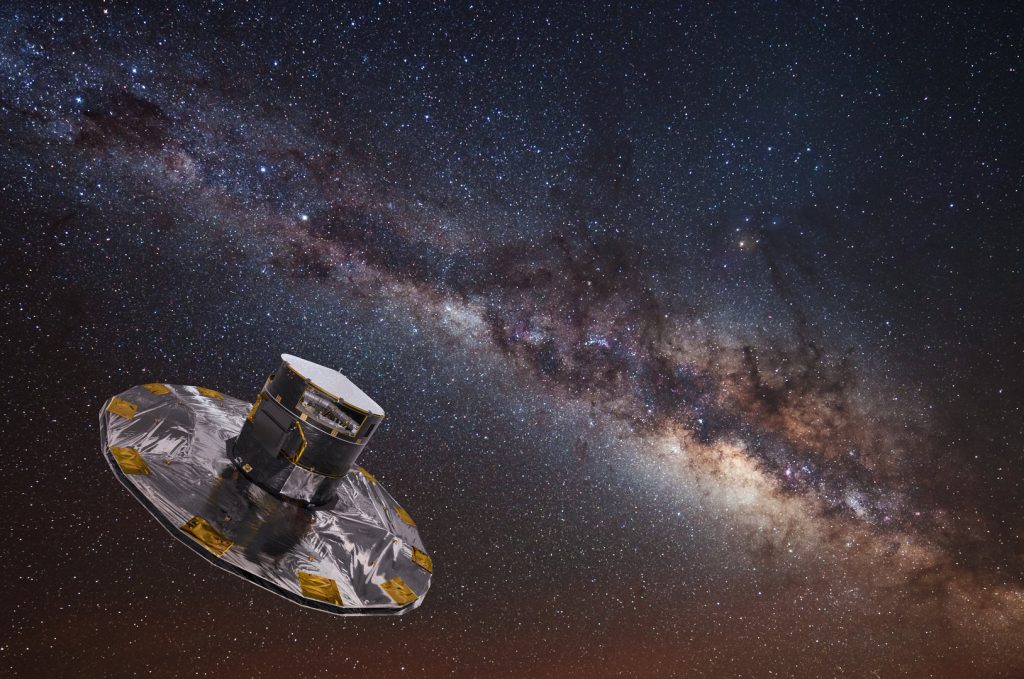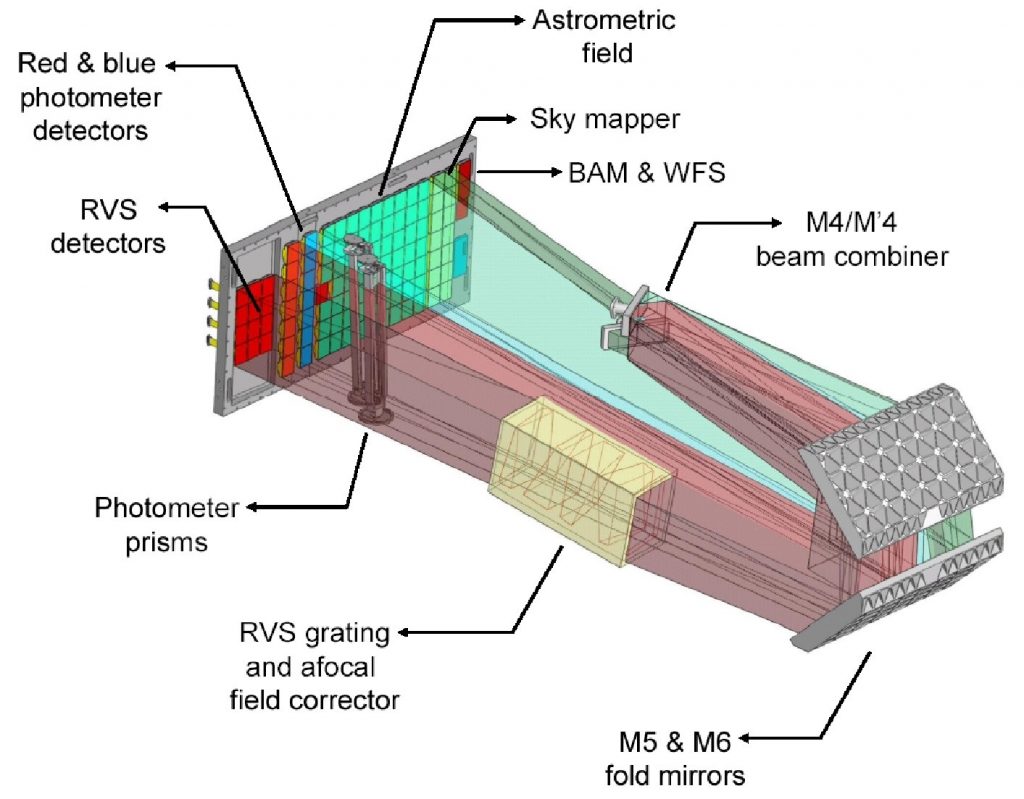A global space astrometry mission, Gaia will make the largest, most precise three-dimensional map of our Galaxy by surveying more than a thousand million stars.
Gaia will monitor each of its target stars about 70 times over a five-year period. It will precisely chart their positions, distances, movements, and changes in brightness. It is expected to discover hundreds of thousands of new celestial objects, such as extra-solar planets and brown dwarfs, and observe hundreds of thousands of asteroids within our own Solar System. The mission will also study about 500 000 distant quasars and will provide stringent new tests of Albert Einstein’s General Theory of Relativity.

Credits: ESA/ATG medialab; background: ESO/S. Brunier
Reference:
During its five-year mission, the spacecraft spins slowly, sweeping the entire celestial sphere. Gaia’s telescopes, with their ten mirrors, focus and direct light onto Gaia’s three science instruments:
- The astrometric instrument (ASTRO): Gaia’s main astrometric instrument precisely determines the positions of stars in the sky.
- The radial velocity spectrometer (RVS) reveals the velocity of the star along the line of sight of Gaia.
- The photometric instrument (BP/RP) provides colour information.

Credits: EADS Astrium